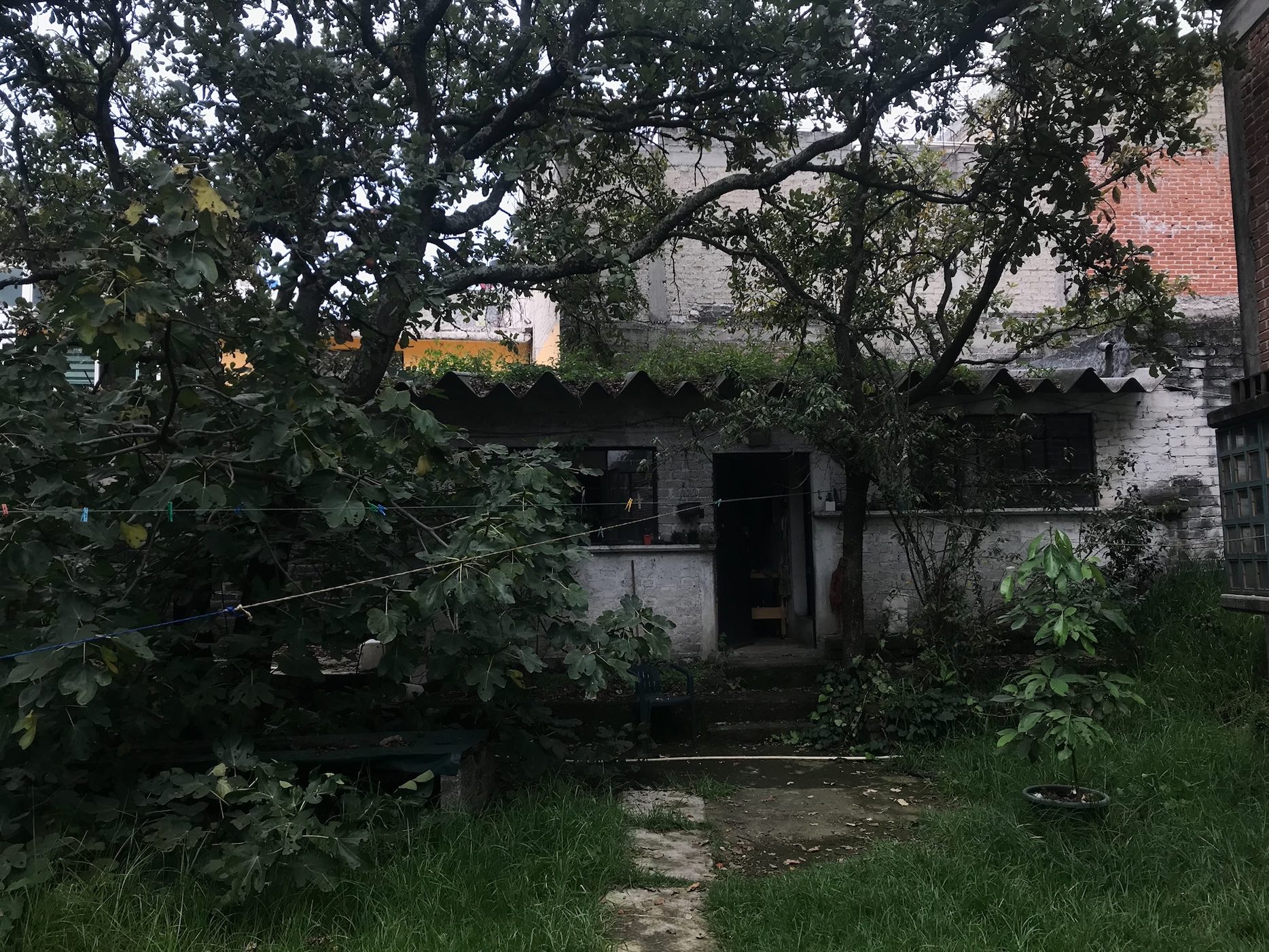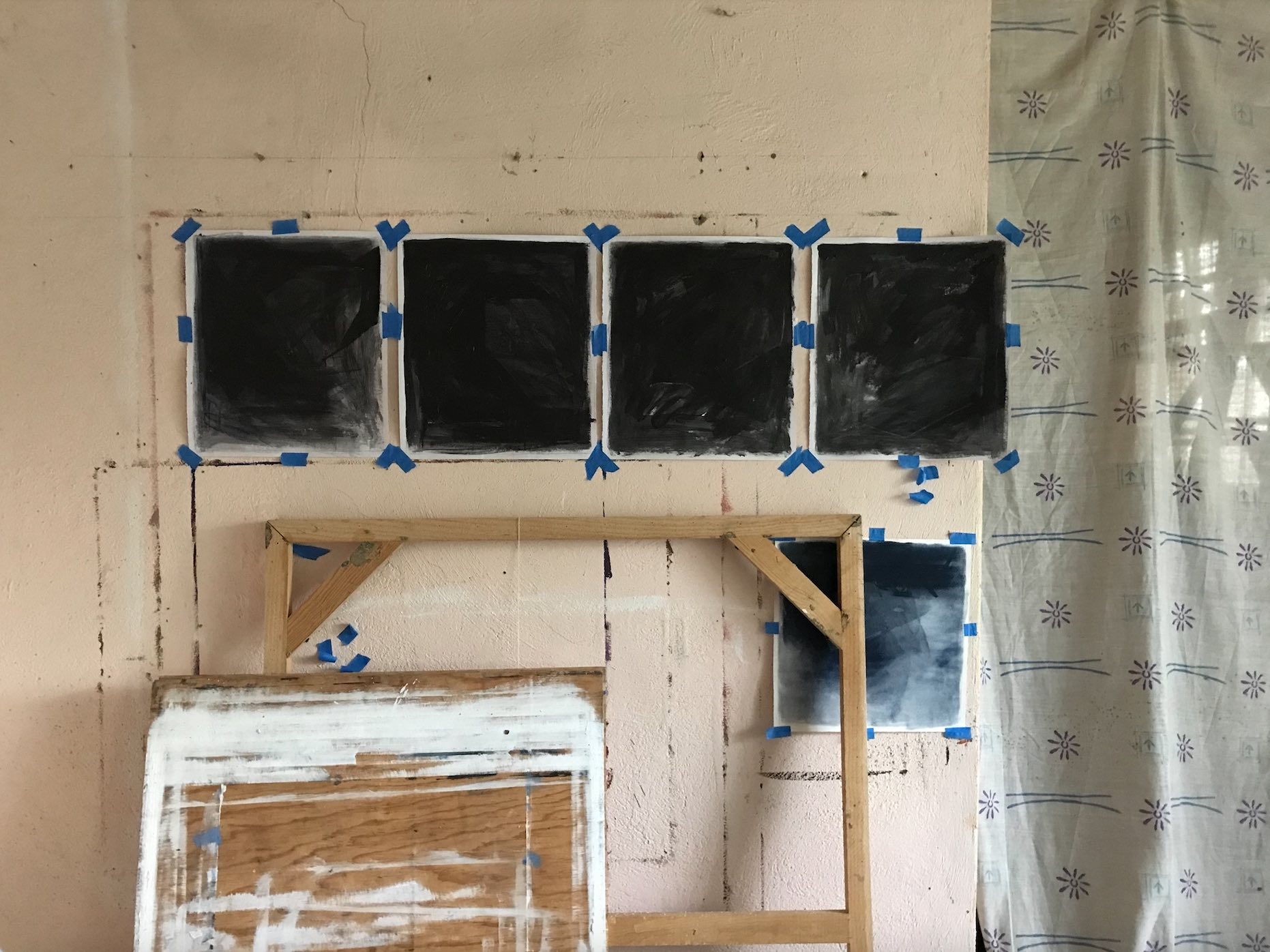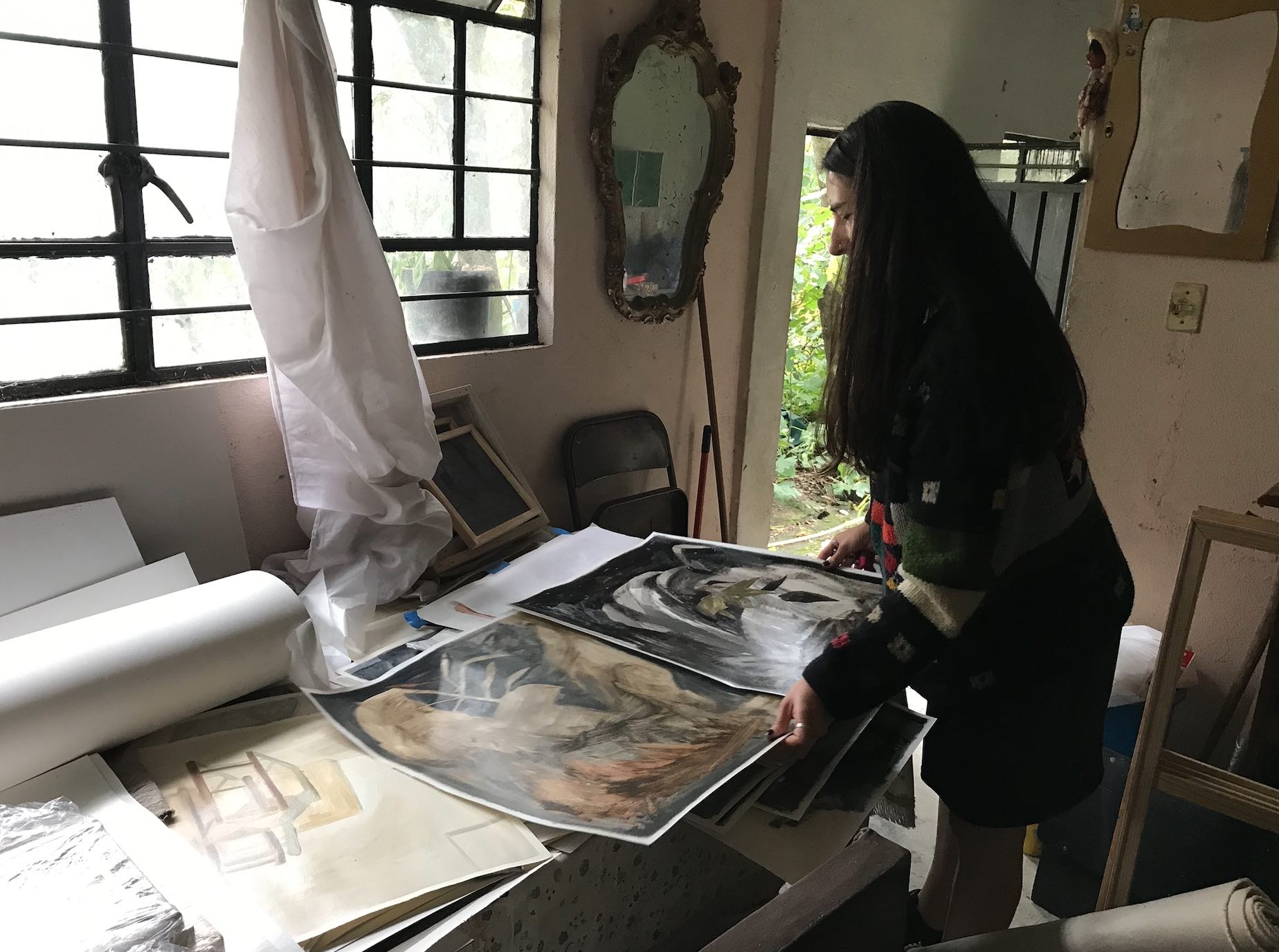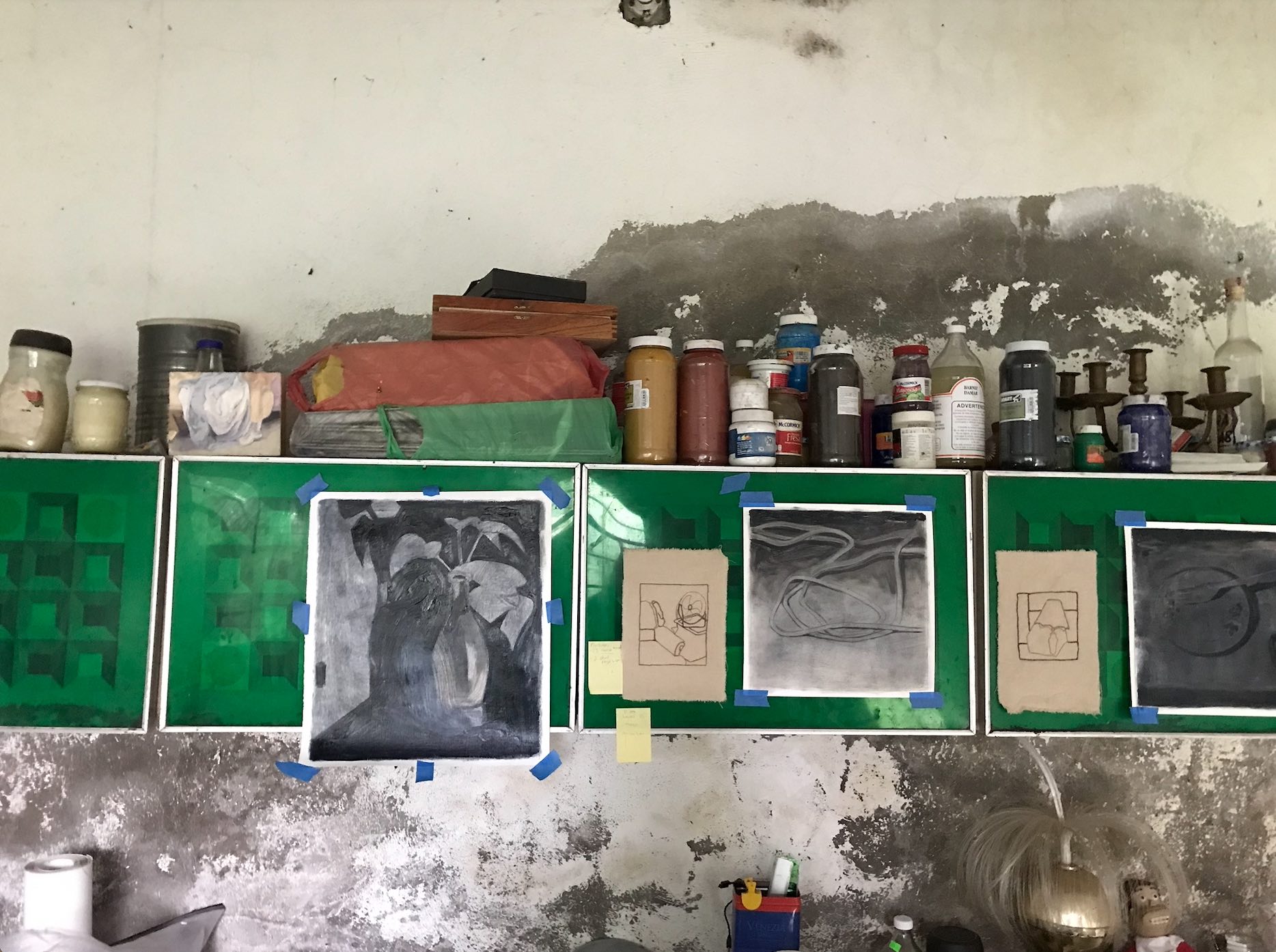![Penumbra en mi memoria [Shadows in My Memory]: Alicia Ayanegui at Siembra](https://firebasestorage.googleapis.com/v0/b/prod-ondamx-art.appspot.com/o/media%2F1630627748533-alicia_ayanegui-penumbra_en_mi_memoria-siembra-kurimanzutto-mexico_city-2021_4.jpg?alt=media&token=110efd6f-c04c-47f8-aa09-a2cc537e9c26)
Interview
Penumbra en mi memoria [Shadows in My Memory]: Alicia Ayanegui at Siembra
by Antonia Alarcón
Reading time
5 min
It’s still cool in the morning, fall is coming, and you can feel the pale sun. Upon entering Alicia Ayanegui’s home, her paintings begin to appear: the frame of a window, a hallway, a peach. Everything seems slightly alien in the daylight. At the back of the property, one finds her studio, surrounded by plants that grow according to their own laws. These everyday spaces are the imaginary that she constructs in her paintings, where attention turns to the objects that for years have occupied the surfaces of this house.

In her painting, she achieves an atmosphere by using minimal resources, something that transforms the image into the suggestion of a memory. Her pieces function as constellations in which fragments construct a sensation of space that, by abstraction, appeals to a common remembrance. Her exhibition, Penumbra en mi memoria [Shadows in My Memory], is now being shown at Siembra 30, in the gallery Kurimanzutto. Deciphering the contours in the dark, Ayanegui covers nighttime domesticity and portrays the lives of things when no one is looking at them.
Alicia Ayanegui: It all started with the curiosity of painting at night, without light. It was very tempestuous because at night all colors look black. So I bought a tiny miner’s lamp and tried to paint in the dark, but there was still too much light. So with only two colors, I created a palette for painting the night.
Alicia also paints by day from mental sketches. Her memories operate as drawings in which she recognizes moments of darkness that, otherwise, could not have been recorded. The same night then leads Alicia to abstraction: where the things whose existence she remembers are mixed with the limitations of sight and the ways of the imagination.

AA: That abstract part is memory. I can’t remember things as they are, but I can remember the sensations I have around that memory. It’s a gesture.
The memories work for moments, in empty spaces accompanying them. Alicia’s paintings seek to portray and share with their viewers both an ambient sensation and a static reflection of the moment of contemplation. The surroundings are a tangle of brushstrokes that replicate the turbulent processes of erased memory. Memory is a space of darkness.
We take a break and realize that the garden is bathed in midday light. The sun’s passage accompanies us in our talk, the space being transformed based on its position. It is true that continuously inhabiting a place can quickly make us fall into habit and flatten our daily lives. For Alicia, who has lived in this space for years, this is not the case: the attention she gives to each of the corners she paints turns it into a meditative act.

I’ve never seen my home as detached from me. These reflections on her home, on its objects and spaces, were set in motion by living a time away and then returning to the place where she spent her childhood. Upon returning, things took on a new life as a result of her memories. Suddenly, a series of objects abandoned for years recounted a narrative that only Alicia could read. A story of nostalgia for the present.
AA: I couldn’t paint something I didn’t know. I paint the things I know because they’re part of me. They’re my objects or the objects that I live with. Or they’re portraits of my family, the chair that belonged to my grandmother or something that belonged to my grandfather. That’s me in the tiny glass trinket. It’s very autobiographical.
In her production, Alicia reflects on the nature of her materials and processes; her work is a constant review of her methodology. At the same time, she understands that her emotions permeate the movements of her hands. Her complexity lies in her ability to observe herself throughout the rhythm of production, in seeing how her environment affects her way of painting.
AA: As a painter, it seems absurd to have as many colors as you want and then reduce the palette so much. These years, my palette has been shrinking; painting a chair with two colors is a challenge for me. In my process, I have questioned the support, the idea of the finish, the material, the gesture. I try to be very honest with myself and with what I paint. It’s the same when I write about my work: I try to be sincere and to convey in words what I feel when I’m painting.

We ended the conversation by asking ourselves why so many artists are now working on the theme of night in their work. Could it be because of pandemic insomnia? Uncertainties? Confinements? Perhaps in order to take a moment to open up one’s pupils and look straight into the dark. In Alicia’s case, her nocturnal exercise is her way of taking repetition to new extremes, further from reality and closer to memory, to the incorporation of her environment, one that does not mutate, but rather changes under the faint light of day and from memory.
We conclude that night is the reflection of something we still don’t know how to name. Between laughter, promises of meals, coffees, and exchanges, we say our goodbyes. We leave the studio and the day has changed yet again: the gray of the sky has already flattened the colors of the garden. The same courtyard has mutated throughout the morning and now the rain can be felt brushing ankles.
Translated to English by Byron Davies
Cover Picture: Alicia Ayanegui, Penumbra en mi memoria, Siembra, Kurimanzutto, 2021. Courtesy of the gallery.
Published on September 2 2021